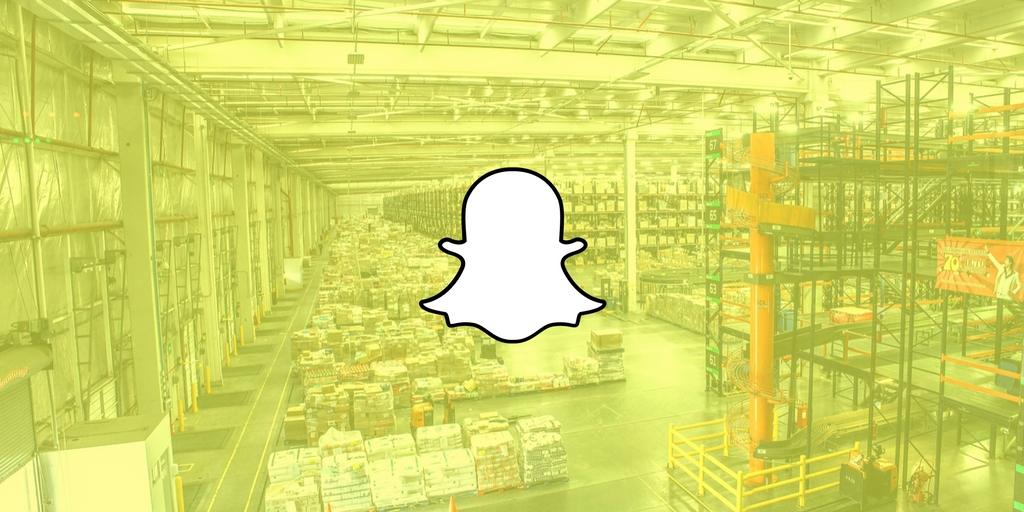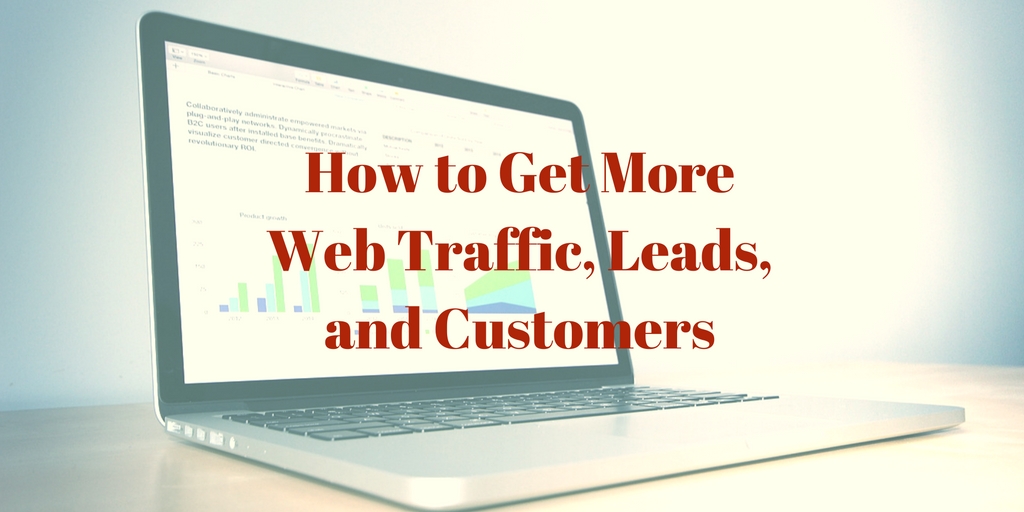
by Fronetics | Oct 10, 2016 | Blog, Content Marketing, Marketing, Social Media
If you’re not distributing content created by others, these six facts will convince you that content curation is an essential part of any content marketing strategy.
Content will help you grow your business. By creating and distributing valuable and relevant content in a strategic and consistent manner, you can drive profitable customer action.
But, it’s not all about you. And it’s not all about the content you and/or your business creates. In fact, content curation is an essential component of a successful content marketing strategy.
What is content curation?
Content curation is the process of sorting through the vast sea of content that is the internet and sharing only that content which is most relevant to your customers.
Being able to identify, make sense of, and distribute such information makes you valuable to your customers. Over time, readers will come to know you as a trusted, reliable source of knowledge — someone who is not always trying to sell them something. You are an expert in your area of business, and you save your customers and prospects lots of time and effort distributing relevant information so they don’t have to go searching for it from independent sources.
How are other businesses handling curation?
Companies that curate content report positive effects on their business. Here are six convincing statistics about content creation for B2B marketers.
The vast majority of businesses curate content.
- 82% of marketers curate content. (IMN Inc.)
- 83.3% of marketers curate/share content from third party sources (e.g., blogs, social media, industry publications or news sites) with their customers and/or prospects. (Curata)
How often do companies curate content?
- 16% of marketers are curating for their audience every day.
- 48% are curating from third-party sources at least once a week. (Curata)
How has curating content impacted business?
- Over 50% of marketers that curate content indicate that it has increased their brand visibility, thought leadership, SEO, web traffic and buyer engagement. (Curata)
- 41% of marketers that curate content indicate it has increased the number and/or quality of their sales-ready leads. (Curata)
Does your business curate content? How do you find content to curate?
Related posts:

by Fronetics | Oct 6, 2016 | Blog, Content Marketing, Logistics, Marketing, Social Media, Supply Chain
What is influencer marketing and how can supply chain companies use it to win over customers?
All eyes were on Peyton Manning following the Denver Broncos’ win over the Carolina Panthers in Super Bowl 50. Would he use this weighty moment to announce his much-anticipated retirement? The nation was a captive audience when a reporter asked him about plans for his future.
“I’m going to drink a lot of Budweiser tonight, Tracy. I promise you that,” replied Manning. He again mentioned the beer brand by name moments later on the winner’s podium.
Budweiser was quick to assure the Twittersphere that the company had not paid Manning for his endorsement but were “delighted” that he had. I’m sure that was an understatement, given Manning’s two (free) casual mentions were valued at about $13.9 million. The now-retired quarterback just likes a good Bud Light — and that’s very good for the Budweiser brand.
This moment illustrates the power of influencer marketing. When celebrities or other popular figures become brand advocates, customers quickly follow. The potential bottom-line impact has both B2C and B2B companies thinking through how they can leverage influencer marketing in their promotional efforts. In fact, it was identified as one of the next big trends in content marketing for 2017.
What is influencer marketing?
Forbes describes influencer marketing as “a non-promotional approach to marketing in which brands focus their efforts on opinion leaders, as opposed to direct target market touchpoints.” Basically, highly visible people become brand advocates by employing your products or services in their everyday lives. There are two types: earned and paid.
Earned influencers
Earned influencers, like Manning to Budweiser, use a company’s product regularly because they like it. The most obvious examples come from the sports and entertainment sector: Marshawn Lynch and Skittles; country duo Florida Georgia Line and Fireball Whiskey; Oprah and everything on her annual Favorite Things list.
Paid influencers
Paid influencers receive compensation for using certain brands. Popular bloggers and social media users, specifically those targeting the growing millennial and mom demographics, are the most prevalent example. In fact, a number of sites — like BrandBacker and Tapinfluence — now exist to help connect brands with social influencers.
How supply chain marketers can leverage influencer marketing
Peer recommendations are increasingly important to the B2B buyers’ purchase process. In fact, nearly half listed their peers and colleagues as a top source of information when evaluating vendors, according to Demand Gen’s most recent B2B buyers survey. This sets the stage for organizations to leverage influencer marketing as a strategic tool to gain new business.
While celebrity endorsements probably aren’t feasible for the supply chain, that doesn’t mean influencer marketing is out of the question. In fact, your company likely has a number of natural brand advocates at your fingertips. Here are a few examples.
1) Your social media followers
Social media has played a prominent role in the rise of influencer marketing because it “enables peer recommendations to play a much greater role in purchasing decisions,” according to Forbes contributor Kyle Wong. So your company’s social platforms are a natural place to begin any influencer marketing campaign. As a start, check your Twitter Analytics dashboard to see who your top follower is this month.
2) Your customers
Happy customers are your best influencers. When customers discuss their experiences with brands on social media, as is the norm these days, their entire networks see this interaction. And review sites are becoming an increasingly popular research tool for B2B buyers. Offering superior service to your customers can prompt them to praise your company on these platforms — not to mention, recommend your business to their peers and colleagues offline.
3) Industry experts and analysts
Who do your buyers turn to for information and opinions about what is happening in the current marketplace? More than this, who are up-and-coming thought leaders in the space?
4) Journalists and bloggers
Having an industry publication drop your company’s name is any marketer’s dream. Engaging in thoughtful discussion with the writers and editors behind that media — either online or at industry events — can be the beginning of a professional relationship that leads to brand advocacy.
Related posts:

by Fronetics | Oct 5, 2016 | Blog, Content Marketing, Logistics, Marketing, Social Media, Strategy, Supply Chain
It’s time to stop ignoring Snapchat — now Snap Inc. — and start thinking about how to use it in B2B marketing.
You may know Snapchat because your kids use it obsessively. You may still think of it as the “sexting app.” Whatever your thoughts, it’s time to stop thinking it will never be relevant to you and your business.
Founder of the Content Marketing Institute Joe Pulizzi named Snapchat one of the next big trends in content marketing for 2017. He sites the platform’s impressive growth as one reason to pay attention.
Snapchat becomes Snap Inc.
In fact, it’s becoming one of the most popular social media networks available: Snapchat reached 10 billion daily video views, passing Facebook in April 2016, and overtook Twitter in daily usage in June 2016, with an estimated 150 million daily active users.
Celebrities, B2C organizations, and even the White House have jumped on board. Everyone is eager to reach the 41% of American 18 to 34 year olds that Snapchat’s ad division claims are using the platform on a given day.
Snapchat’s success has prompted the company to expand and diversify. In September, it launched a new line of business, video-enabled sunglasses (called Spectacles), and rebranded with a new corporate name, Snap Inc. CEO Evan Spiegel hinted at even more to come in a blog post: “Now that we are developing other products, like Spectacles, we need a name that goes beyond just one product.”
What’s next for the self-proclaimed “camera company” is a mystery, but one thing is for sure: B2B companies should be paying attention.
Behind every B is a C
Gary Vaynerchuk, CEO of Vayner Media, makes a convincing argument in his article Why Snapchat Will Be Great for B2B Companies. He recognizes a pattern among social networks that signals the rise of Snapchat in the B2B space:
“These platforms start off young, start off consumer based, start in a niche, and then go mainstream. It baffles me that people don’t understand that when an app hits 100 million active users, it’s gone mainstream. And what does that mean? It means that the platform can start to mature and start getting deeper into the business world. That’s because once you have the attention of the 35- to 65-year-old world, you now have the potential to cross over into the B2B world.”
Vaynerchuk is also quick to note that “behind every B is a C,” meaning there is a human behind every business making a decision. If a company is able to reach that human with relevant content on the user’s preferred platform, that’s a win.
Perhaps it’s early to start pouring major resources into Snapchat. But Vaynerchuk predicts that it has enormous potential for B2B organizations as early as 2018:
“Snapchat will be an excellent place for B2B players who act like media companies — media companies that create stories to bring value to their end users. Those players will find their niche and their audience, allowing them to disproportionately pick up business. Meanwhile, their competitors will still be debating the ROI of Snapchat. And they’ll be left behind if they can’t adapt and evolve with the evolution of these platforms.”
How could your company use brief video storytelling to bring value to your customers? It’s time to start the wheels turning.
Related posts:


by Fronetics | Oct 4, 2016 | Blog, Content Marketing, Logistics, Marketing, Social Media, Supply Chain
This list of social media articles includes useful information for both people who rarely use social networking sites and for more advanced users.
We’ve been using this space to write about social media a lot lately. That’s partly because so many exciting new developments and enhancements keep popping up. It’s also because we can’t underscore enough how important it is for companies in the supply chain industry to participate in social media.
I thought it would be helpful to revisit some of our recent information, guides, and tips and tricks regarding social media use for B2B marketers. The following list encompasses both general, how-to-type instruction and more detailed advice for more advanced users.
I’ve segmented articles by platform and included a catch-all category at the bottom as well. Don’t see what you’re looking for? Shoot me an email to let me know what social media-related content you’d like to hear about on our blog.
LinkedIn
LinkedIn is the most popular social network for B2B companies. Here’s what you need to know to get started.
Learn about the free and paid methods LinkedIn offers to help you find and recruit new employees.
LinkedIn’s 433+ million member base presents an enormous opportunity for your company to earn new business. Start attracting those members to follow you.
Twitter
One of the top social media sites for B2B marketers, Twitter can help businesses spread brand awareness and communicate with customers.
You may find yourself frequently strapped for quality tweeting material. Here are some ideas to not only fill your feed but to keep your followers interested and engaged.
Leverage insights from Twitter’s analytics dashboard to improve audience engagement, reach, and content development.
We did an experiment to determine the ideal frequency for posting on Twitter. The resulting numbers were abysmal. But that means the experiment worked.
Add stickers to your photos on Twitter to join in on real-time conversations about trending topics and to grow your audience.
Twitter is changing its rules on the 140-character limit for your tweets. Learn what’s going to be different.
Facebook
Facebook Live offers businesses a new, creative platform for engaging customers. This article describes what marketers need to know about it and how to use it.
YouTube
YouTube is a useful engagement tool for B2B marketers who want to reach the social network’s more-than-3-billion users. Learn how to get started in this article.
Get started creating YouTube videos for your business with these easy-to-use tools and ideas for content.
Learn how to improve the reach of your YouTube videos with these strategies for distribution.
Reddit
Reddit is a gold mine for relevant, engaging content to share with your social media followers. Here’s how it works and how you can get started.
Other resources
Fronetics has developed this training specifically for business owners, marketers, and employees looking to learn more about social media and how they can contribute to their company’s success through these networks.
Fronetics has developed a comprehensive report exploring social media use in general and, specifically, within the logistics and supply chain industries.
Businesses are using social media as a strategic tool. This article explains the top three benefits companies in the logistics and supply chain industries can enjoy from participating on social platforms.
Your business should be on social media showing buyers that you know what they want and that your business can provide it.
A cross-departmental social media team can help your company get more out of social networking sites.
Participating in social media is not about earning followers; it’s about building relationships with your current and future customers.
If your social media strategy doesn’t align with your business objectives and target audience, your marketing budget is probably better spent elsewhere.

by Fronetics | Oct 3, 2016 | Blog, Content Marketing, Marketing, Strategy
The top-performing business blogs have these six things in common, from posting frequency to outsourcing writing.
Maintaining a blog for your business can be somewhat of a guessing game. How often should you publish? Should you do all the writing in-house? Will anyone read our posts?
A recent survey of 428 marketers conducted by Curata sought to identify any patterns or trends among those with the most successful business blogs. Specifically, the authors grouped together those whose blogs had more than 10,000 views per month and compared them to those with less than 10,000 views per month.
The most successful blogs (those with over 10,000 views per month) have several things in common. Here are some highlights:
1) Size doesn’t matter.
You may suspect that the larger the company, the more traffic its blog gets. That’s not the case. In fact, two-thirds of the most successful blogs were run by smaller companies (<$100M revenue).
2) Age is a factor, but it’s not everything.
Of the most successful blogs, 44% had been up and running for 5+ years. Time gives companies a chance to build up their readership and perfect their content strategy. Yet 65% of businesses who have had a blog for 5+ years did not get 10k+ views/month — meaning there is more to successful blogging than age.
3) Frequency is key.
Blogging frequency impacts factors like search engine rankings and audience engagement. So it’s no surprise that 90.5% of best bloggers blog at least once a week.
4) They set standards.
Interestingly, 80% of the best bloggers have a governance team for blogging activities. This can be many things: ensuring post quality and accuracy, determining best practices, outlining a code of conduct, etc.
5) Outsourcing helps.
The best bloggers rely more on external resources and less on internal resources. They outsource an average of 23.6% of their content production, compared to only 11.8% by blogs with less than 10k views per month.
6) They send more subscriber emails.
To promote their posts, 39% of the best blogs send a newsletter with their blog content to their subscriber base at least weekly. More than half of blogs with less than 1,000 views per month sent subscriber emails as infrequently as once a quarter or, in some cases, not at all.
Read the full report from Curata’s survey here to get more insight into the best business blogs.
Related posts:

by Fronetics | Sep 29, 2016 | Blog, Content Marketing, Logistics, Manufacturing & Distribution, Marketing, Strategy, Supply Chain, Warehousing & Materials Handling
Content marketing can help your organization amplify its efforts to drive traffic, improve conversion rates, and increase sales.
A recent survey of over 4,500 marketers at organizations around the globe found that converting leads to customers (74%) and growing traffic to their websites (57%) were their companies’ top marketing priorities. Perhaps not surprisingly, these marketers also overwhelmingly reported that generating traffic and leads was their top challenge. Often our business priorities are the most difficult to achieve.
Enter, content marketing.
Content marketing is a form of inbound marketing in which businesses publish content to attract prospects who are interested in products in services like theirs. This marketing approach can be highly effective in growing brand awareness, generating leads, and increasing sales. In fact, according to the same survey, organizations using inbound marketing were four times more likely to rate their marketing strategy highly than outbound organizations.
Let’s look at one example from the warehousing sector.
Business was decent for Company X. It had experienced positive growth for over a decade, despite lacking a clear marketing strategy. But leadership started to wonder: Are we missing opportunities for growth?
Company X sought a multi-level digital marketing strategy that would help them increase web traffic, generate more leads, and convert prospects to customers. The team hired Fronetics to create and implement such a strategy.
After 24 months, the results were telling: Web traffic increased by nearly one-fifth (19%). Company X tracked 244 high-quality leads directly sourced from its new content marketing efforts. And new business grew by a remarkable 30%.
Content marketing was highly successful for Company X in achieving its business goals of driving traffic and new business. In fact, the organization realized many other positive benefits as well. You can read about more of them, as well as the strategy Fronetics used to get there, by downloading the case study below.

Want to increase traffic to your business’ website and generate more leads and customers? Have you tried content marketing? Here are a few resources to get you started.
Related resources:
Need more help? Contact Fronetics to request a free strategy session.








